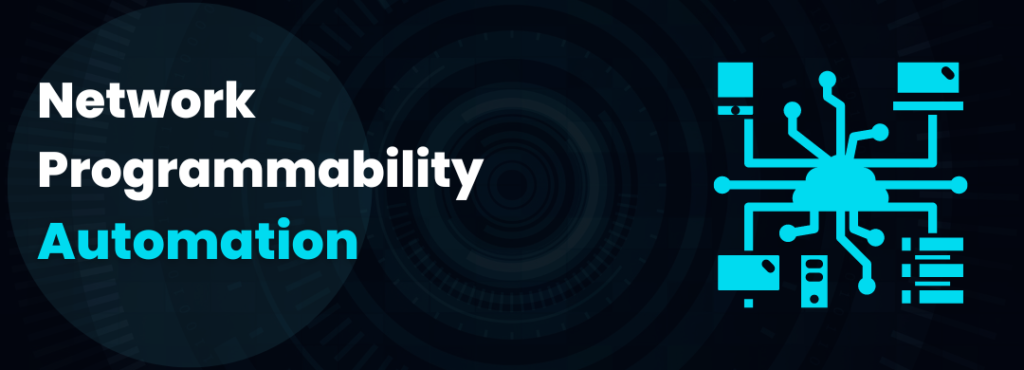
Network Orchestration: Simplify complexity
In today’s interconnected world, where businesses rely heavily on digital networks to function efficiently, the complexity of managing and optimizing those networks can become overwhelming. With the Programmability and Automation applied to your networks, you improve and streamline the administration of your network. However, we can find services that require running multiple automated tasks, which need to be executed with intelligent order and control. This is where network orchestration comes into play. Network orchestration is a dynamic and intelligent approach to network management that enables organizations to simplify the complexity of their networks, streamline operations, and improve overall connectivity.
In this blog post, we’ll delve into the world of network orchestration, exploring its definition, benefits, and how it’s transforming the way we manage networks
What is Network Orchestration?
Network orchestration refers to the process of automating and managing complex network tasks through a centralized platform, better known as Network Controller. It involves the coordination and integration of various network elements, such as routers, switches, firewalls, and virtual machines. , to create a unified and programmable network infrastructure. The objective is to provide organizations with a comprehensive vision of their network, which allows them to automate workflows.
A workflow is a set of related tasks. Each of these tasks may or may not be automated and are completed in a certain order to achieve an organizational goal.
A workflow to configure a service on the network could involve multiple tasks, on multiple devices, from multiple areas. The user from the controller initiates a flow, and the orchestrator automatically takes care that the service is configured and secured from end to end.
In other words we can say that orchestration is to automate the way in which network requests are carried out and minimize the human intervention necessary to deliver an application or service. Achieving with this optimize performance and improve agility.
Key Benefits of Network Orchestration
- Network Management Simplification: Network orchestration consolidates network management tasks into a single platform, reducing the complexity associated with managing multiple devices and configurations. It allows network administrators to define policies and rules that govern network behavior, making it easy to deploy, monitor, and troubleshoot network infrastructure.
- Improved Agility and Flexibility: By leveraging network orchestration, organizations can more quickly respond to changing business needs. Enables dynamic provisioning and configuration of network resources, allowing for rapid scalability and adaptability. This flexibility is particularly crucial in today’s cloud-centric environments, where rapid application deployment and workload mobility are essential.
- Improved Operational Efficiency: Network orchestration automates routine tasks, reducing the manual effort required for network management. Eliminates the need for manual configuration changes, minimizing the risk of human error and improving operational efficiency. By automating processes, organizations can optimize resource utilization, effectively allocate bandwidth, and ensure consistent service delivery.
- Enhanced Network Security: Network orchestration provides a centralized security framework, allowing organizations to apply security policies consistently across the entire network infrastructure. It simplifies the implementation of security measures such as access control, encryption, and threat detection, thereby strengthening network defenses and reducing vulnerabilities.
- Cost Optimization: With network orchestration, organizations can optimize their network resources and improve cost efficiency. By automating the provisioning and deprovisioning of resources, companies can avoid oversizing, which leads to reduced capital and operating expenses. Additionally, improved operational efficiencies and reduced downtime result in increased productivity and cost savings.
The Transformational Impact of Network Orchestration
Network orchestration is revolutionizing the way networks are managed and operated. It empowers organizations to achieve digital transformation goals by leveraging the full potential of their network infrastructure. With network orchestration, businesses can adopt software-defined networking (SDN) principles, enabling them to create virtual networks, simplify network configurations, and achieve greater network agility.
Furthermore, it complements emerging technologies such as edge computing and Internet of Things (IoT) deployments. It provides the foundation for managing complex distributed networks, enabling organizations to seamlessly connect and manage a wide range of devices and services.
Real-World Use Cases of Network Orchestration:
- Automated Network Provisioning: Network orchestration enables the automation of network provisioning processes, making it easier and faster to deploy new network services and configurations. It allows organizations to automate the provisioning of network resources such as VLANs, subnets, firewall rules, and VPN connections. This streamlines the onboarding of new customers, reduces manual errors, and improves time-to-service delivery.
- Service Chaining and Service Function Chaining: It enables the creation of service chains and service function chains by intelligently routing network traffic through a series of network functions and services. For example, in a virtualized environment, network orchestration can automate the process of chaining virtual firewalls, load balancers, and intrusion detection systems to ensure that traffic flows through the required security and optimization services.
- Multi-Site Network Management: Network orchestration allows for centralized management and coordination of network resources across multiple sites or data centers. It provides a unified view of the network infrastructure, simplifies configuration and policy management, and enables consistent deployment of network services across different locations. This is particularly useful for organizations with distributed networks or those managing branch offices.
- Dynamic Network Scaling and Elasticity: Network orchestration enables dynamic scaling of network resources based on demand. It allows organizations to automatically adjust network capacity to accommodate fluctuations in traffic volume, application requirements, or user demand. This ensures optimal performance and resource utilization, as well as efficient allocation of network resources.
- Network Service Lifecycle Management: It facilitates end-to-end management of network services throughout their lifecycle. It automates service activation, configuration changes, performance monitoring, and service decommissioning. This helps organizations efficiently manage service-level agreements (SLAs), track service performance, and ensure consistent service quality across the network.
- Cloud Network Management and Integration: Network orchestration plays a critical role in managing and integrating networks within cloud environments. It enables the automated provisioning and management of network resources in cloud platforms, facilitates network connectivity between on-premises and cloud environments, and supports hybrid cloud networking configurations. This allows organizations to achieve seamless connectivity, scalability, and flexibility in their cloud deployments.
- DevOps and Continuous Integration/Continuous Deployment (CI/CD): Network orchestration supports DevOps practices by automating the deployment and configuration of network infrastructure as part of the CI/CD pipeline. It enables integration between network orchestration tools and development tools, ensuring that network changes are automatically deployed alongside application updates. This streamlines the application delivery process, reduces deployment errors, and improves overall agility.
These real-world use cases highlight the value of network orchestration in automating network operations, optimizing resource utilization, improving service delivery, and enabling seamless integration across diverse network environments. By adopting network orchestration, organizations can enhance their network agility, scalability, and efficiency while reducing manual effort and operational complexities.
Network Orchestrators
Some examples of widely used network orchestrators:
- Cisco Application Centric Infrastructure (ACI): ACI is a Cisco network orchestrator that enables automation and centralized management of physical and virtual networks in data center environments.
- Huawei iMaster NCE (Network Cloud Engine) is a cloud-based network orchestration and management system that provides advanced automation and control capabilities for enterprise and service provider networks.
- Cisco NSO (Network Services Orchestrator) is a network orchestration platform developed by Cisco Systems. The primary goal of Cisco NSO is to simplify and accelerate the delivery of network services by providing a centralized platform for the configuration, deployment, and management of network services.
- VMware NSX: NSX is a software-defined network (SDN) virtualization platform from VMware. It provides network orchestration capabilities for the management and automation of virtual networks in cloud and data center environments.
- Juniper Contrail: Contrail is a software-defined network (SDN) orchestration and automation platform from Juniper Networks. It enables the management and provisioning of virtual and physical networks in cloud and data center environments.
- OpenDaylight: OpenDaylight is an open source project supported by the Linux Foundation that offers an orchestration framework based on software-defined networking (SDN). It provides tools and APIs for network management and automation in data center environments and service provider networks.
- OpenStack Neutron: Neutron is a network component of the OpenStack platform, which provides network orchestration capabilities for managing virtual networks and connectivity between virtual machines in cloud environments.
- Ansible: Although not a dedicated network orchestrator, Ansible is a popular automation and orchestration tool that is widely used in network management. It provides a YAML language-based approach to defining and automating network configurations.
These are just a few examples of network orchestrators available on the market. It is important to note that choosing the right orchestrator will depend on the specific requirements of your organization and the network environment you are in.
Conclusion
In a world where networks are the engine of companies, network orchestration is presented as a radical change. By simplifying network management, improving agility, and optimizing resource utilization, organizations can leverage to unlock new opportunities and stay ahead in the digital age. Taking this transformative approach will enable companies to build resilient, scalable, and secure networks that fuel growth and success.




